SURVIVOR 5. Interviewed: 28/07/2009. Name: Mrs. Shazada .Hssen .Muhammed.
Born: 1953, Kani Qadir village. An Anfal Survivor – Anfal 3.


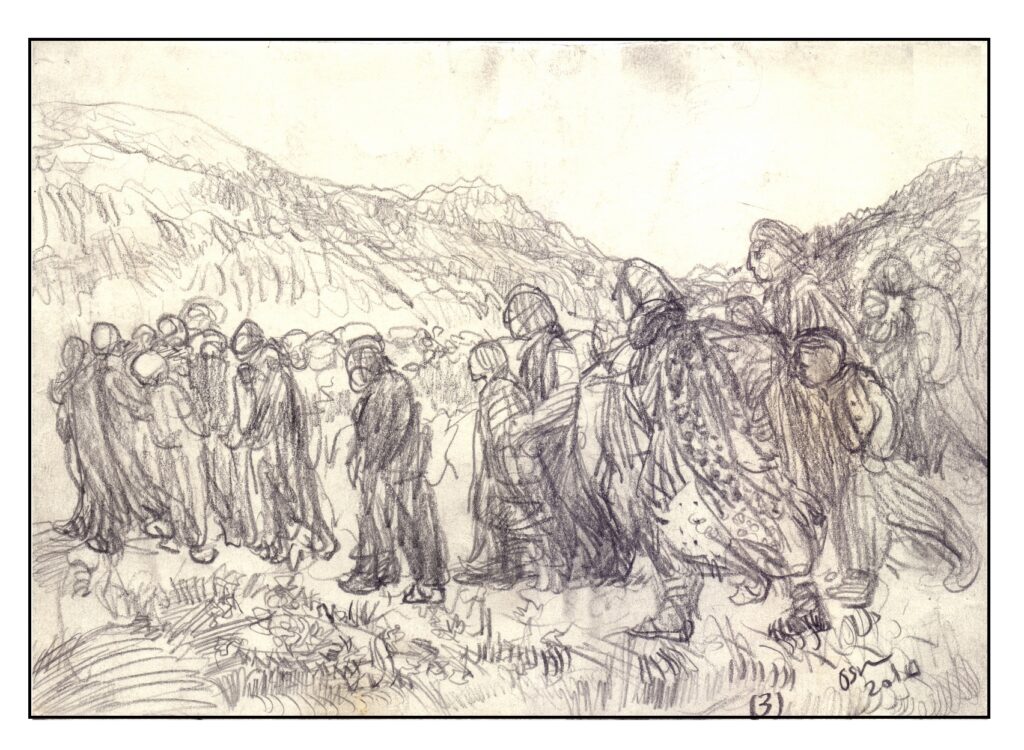


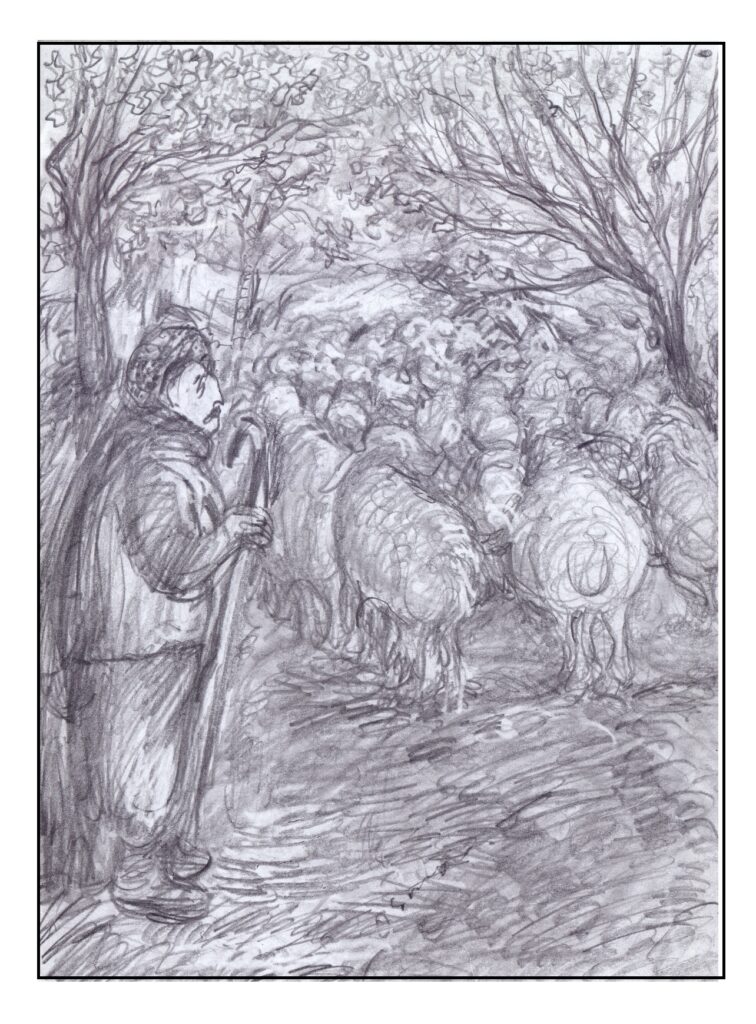



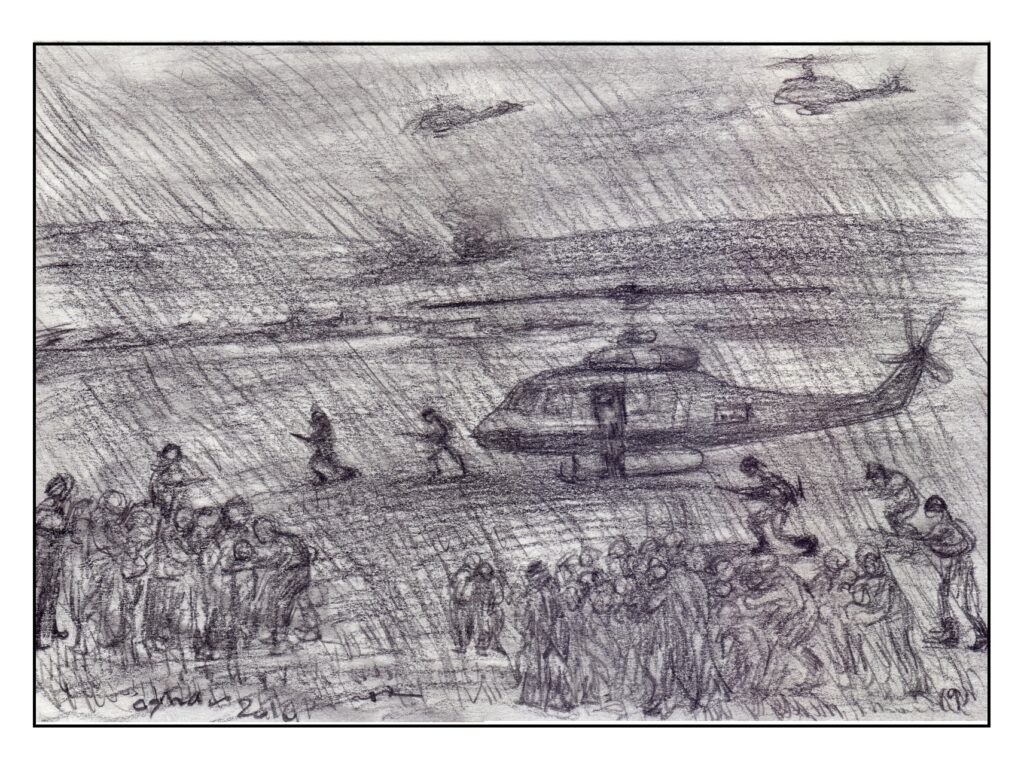






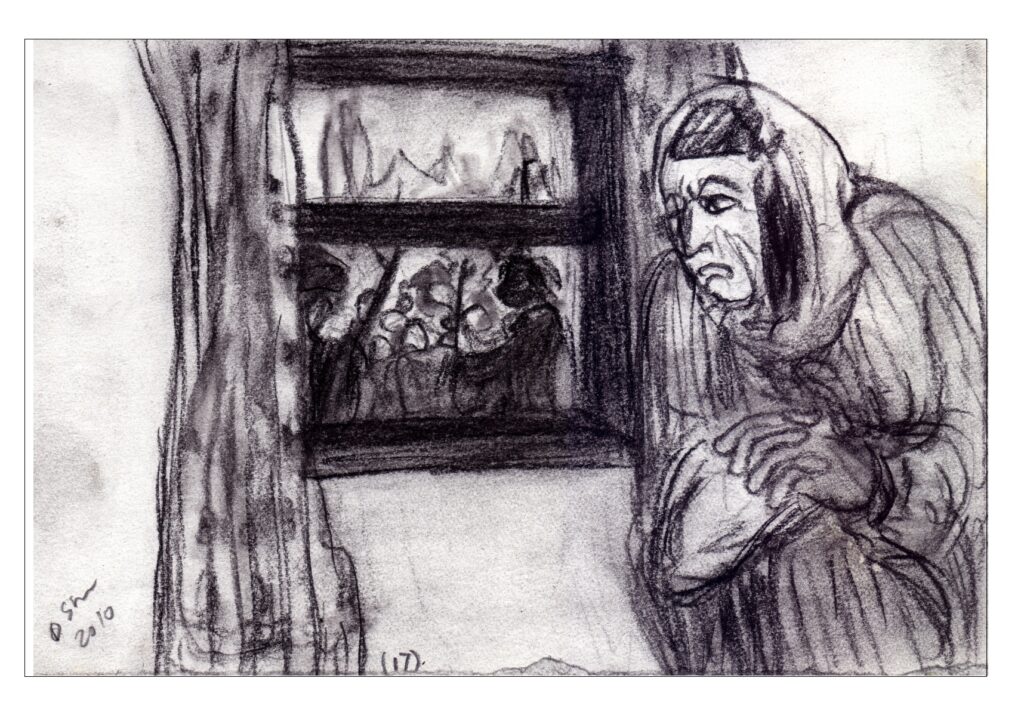
Mrs S.H.M.S.’s Abridged Testimony:
A witness: My name is S-H-M-S. I was born in 1953 in Kani Qadir village, Qadir Karam castle under the administration of Kirkuk province.
My sisters and brothers were in Kifri, out of the Anfal process zone.
On the 16th of June 1986 I married my cousin, my uncle’s son, whom were in Qadir Karam, Dwanza Imam (12 Imams) village.
In April 1988 we were constantly bombarded. We had a large number of livestock, more than 1000 stocks; we were villagers and live a very happy life.
Each day we were attacked by planes and then we were obliged to evacuate our village. No one left in the village, we moved heaven and earth just to keep ourselves from the threat of the planes. The whole village went up to the mountains and hid our selves there and some had recourse to other safe places down skirt of the village.
We spent more than 8 days outside the village. After eight days we were still constantly bombarded by the artillery of Dusskhormatw. I saw Gawhar (the wife of Awat, one of our neighbors), and my brother-in-law, and a girl called Kirkuk (our neighbor) and many other villagers were killed there; their bodies were in pieces.
Taza Shar village, some miles away from our village was under a great attack and there was a heavy fight between Peshmargas and military forces there. When shooting stopped and the village was covered with silence, we thought that the war ended but later we knew that the whole village was killed with chemical weapons. The planes flew over the village trailing a strong white smoke on the Peshmargas and then no words could be heard from the village and it became completely silent. The Peshmarga could no more defend and fight.
Two hours later a large number of armed forces of land and air forces equipped with the most developed machine guns and planes was sent to the area especially to Bambag village.
I myself saw with my own eyes that many of the Talaban men were arrested and held by planes with a large number of women. Of the arrested women, many of them were pregnant. They were told they were taken to Qadir Karam. In that hot weather they started loading them into vehicles and no one could have seen them yet. The other men survivors were arrested and carried by the plane to somewhere unknown.
Before the military forces mixed with us in the village, there had been a heavy fight between Peshmargas and military forces of government. I was with my sister-in-law who was just an adult. My child was just ten months old we could hold him in turns.
The planes were flying over each valley and each land without fear because the fight had ended and there weren’t any Peshmargas left.
Talib and Ghalib with other people were walking and some others were going by tractors. As we saw my husband, his nephews, Asi Fayaq, Jabar Salar, and his cousins were lifted in Land Cruisers, we haven’t seen them yet.
It was raining heavily, no one could say a word with others and there was a great chaos. It was a doomsday like moment for the people. I saw my brother in Qadir Karam, he asked me about my husband and I answered that he was arrested and brought to jail. “You can’t be serious! You won’t see him again.” he said.
At the checkpoint of Braim Qala, I was separated from my husband. I was pregnant and had a child of 10 months old.
I had relatives in Qadir Karam and stayed there for 12 days. Haji Muhammad and his family told me “you could use our daughter’s ID to pass from this difficult situation.”
Nothing was left to me except my daughter and a pack of her pijamas and then I went to Kirkuk and stayed there for 12 days. In Kirkuk they launched a checking process to find those who had hidden themselves or those who had moved to the cities from the villages. But fortunately my nationality ID card was still under Kifry administration and my marriage hadn’t been registered until that moment. My brother took my daughter to Kifry separately and then I myself went and stayed for 4 months not to be seen by any people. After an amnesty was declared by Saddam Hussein and people could come into view and I came out. After the survivors started talking about the incident and other people who were arrested, we completely knew what had happened. A large number of people had been arrested and expelled from their villages and farms. Of my own family and extended family about 2000 people have been lost in the Anfal process. They were all treated badly. Later I came to Smood and resided there. But every day we were purposely annoyed by calling to the police station to prove our presence and to be investigated.
The researcher: What did you live with?
The witness: What the survivors of Anfal can live with? I brought my mother-in-law and sister-in-law to my house to live together and I bought a sewing machine and started tailoring. I depended on that but I lived a very difficult life. I was called for Saddam’s trial as a witness. I became very happy when I saw Saddam in the dock. About 180,000 Kurds have been lost in the Anfal process. Four of the Baathiest regime leaders and Anfal perpetrators were executed by the Arabs on the case of Dujail but no one has been executed for the sake of the Kurds yet. First when I was told about my going to Saddam’s trial I became very, very happy and I held a party but when I arrived and saw the government and the Kurdsh leaders’ apathy towards 180,000 lost lives, I felt regret for going there. What can I do that my daughter couldn’t see her father? Am I responsible for that?!
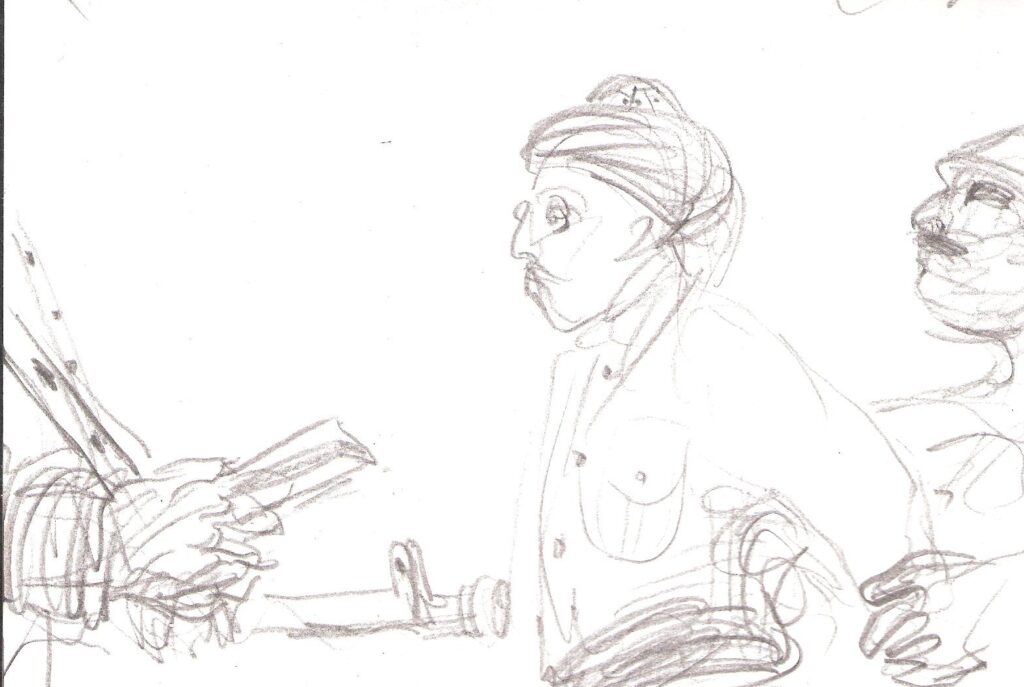
Men were arrested
